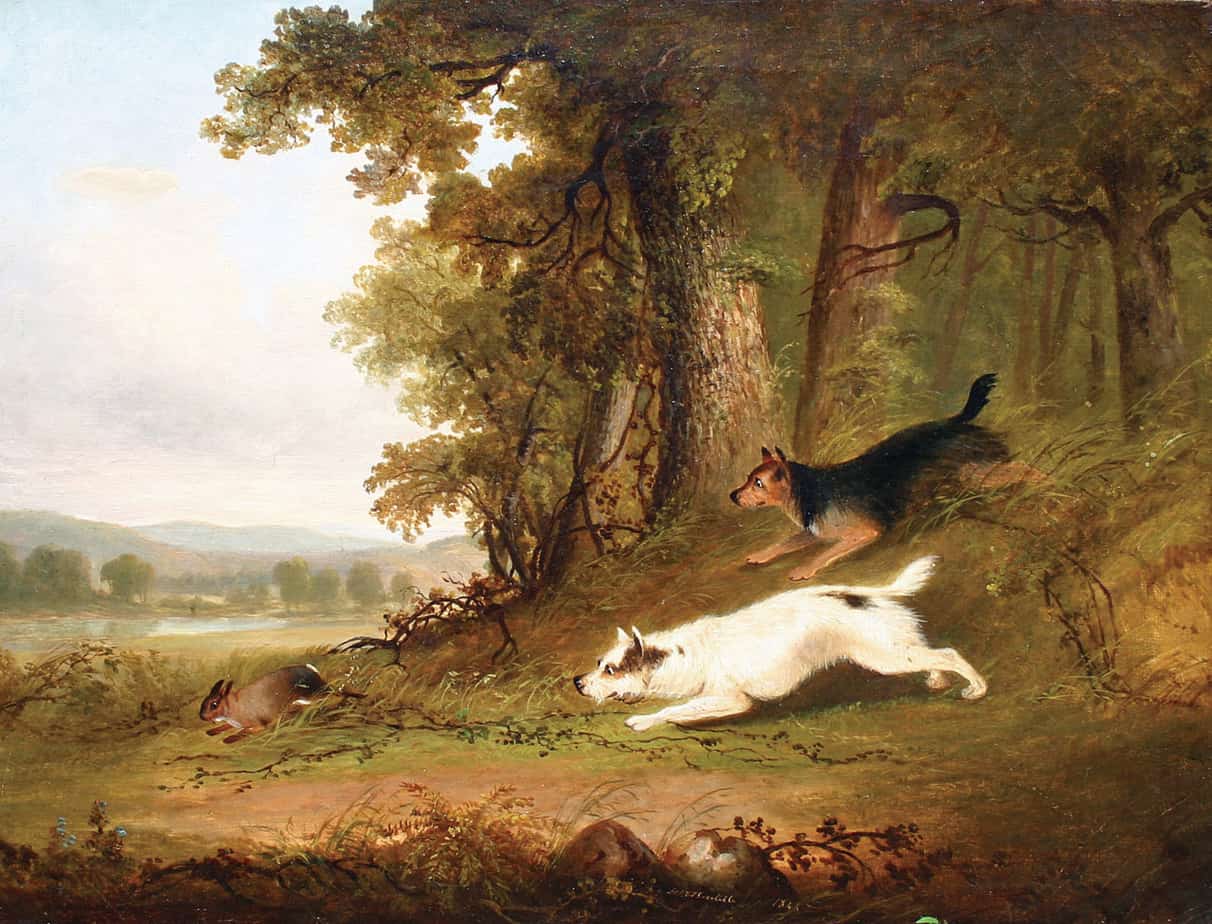In the spoof Thriller Concept Generator below, cartoonist Tom Gauld captures the centrality of the chase sequence in the thriller genre.
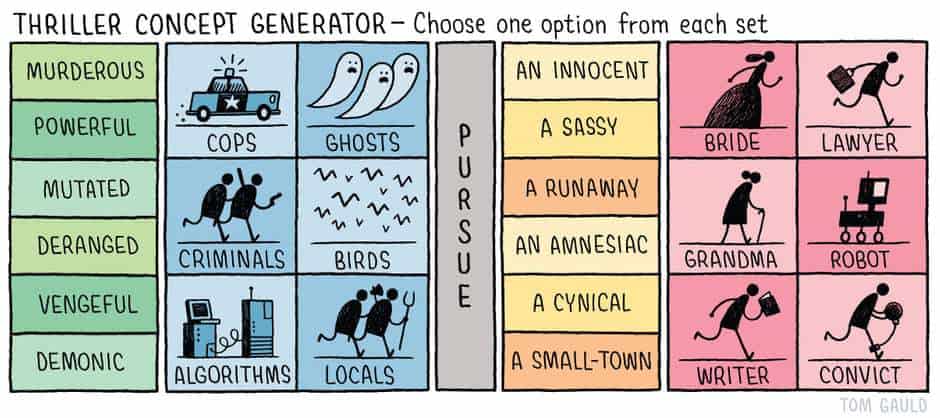
THE ENDURING APPEAL OF CHASE SEQUENCES IN STORY
Among the earliest forms of human selfawareness was the awareness of being meat.
David Quammen, science writer
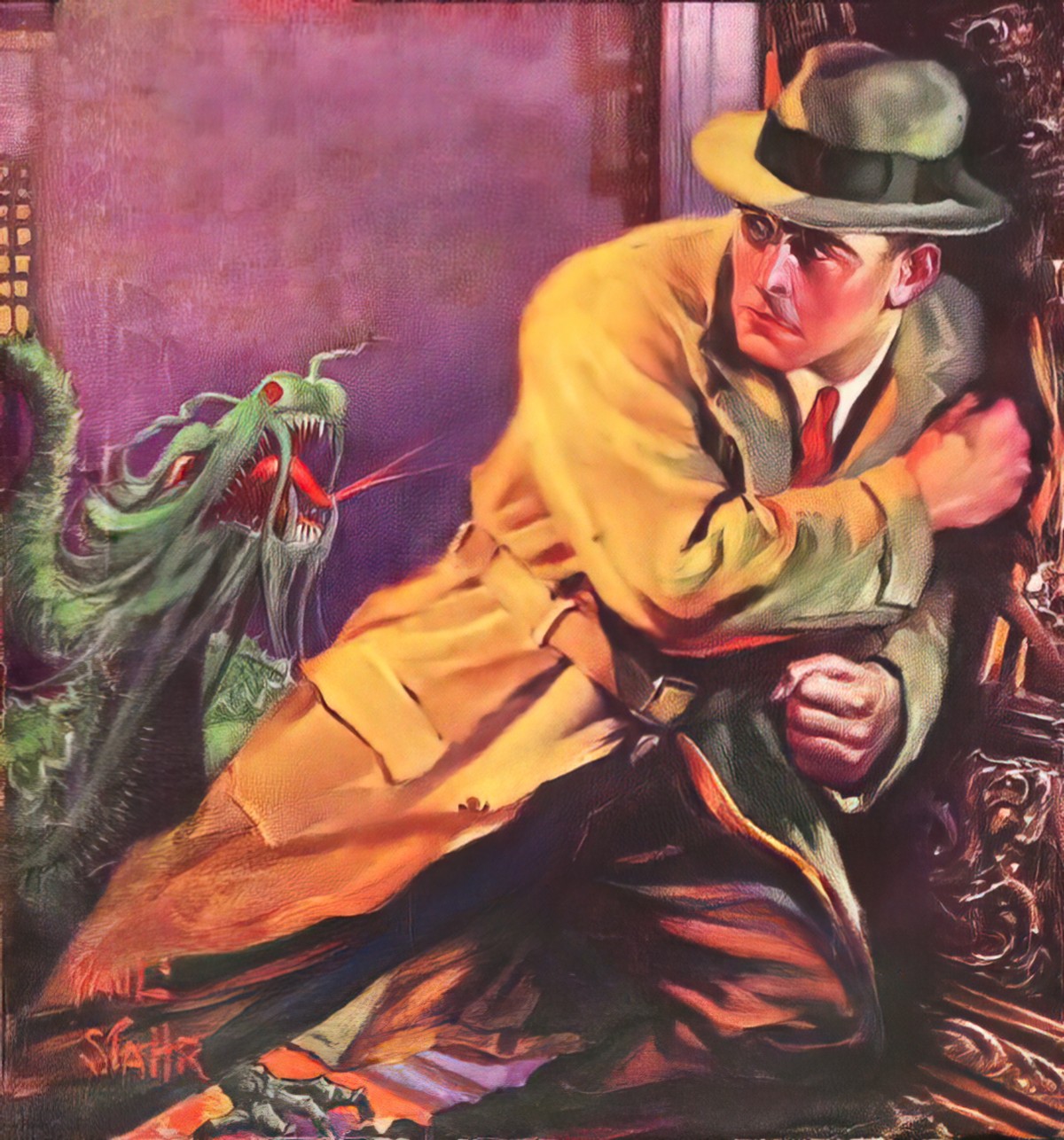
Pretty much every modern storytelling technique can be found in the Bible. As for chases, there are plenty. Moses fleeing Egypt springs to mind.
There are the chase scenes in fairytales, which often have a dream-like quality, ignoring the physics of real time and space:
The children saw her coming from afar and the maiden threw a brush behind her. The brush changed into a huge mountain of bristles with thousands and thousands of thorns. The nixie had great difficulty in climbing over them. When the children saw her, the boy threw a comb behind him that changed into a huge mountain with thousands and thousands of spikes, but the nixie was able to grab hold of them and climb over the mountain. Now the maiden threw a mirror behind her that formed a glass mountain that was so very, very slippery that the nixie couldn’t climb over it. So she thought: “I’d better go home and fetch my axe and split the mountain in two.” However, by the time she had returned and had smashed the glass, the children had long since made their escape, and the water nixie had to return to tread water in her well.
“The Water Nixie”, from the first Grimm collection
I suspect the chase nightmare precedes humanity. When my dog sleeps he twitches his feet as if running. I’ll never know for sure, but when he emits those half-hearted barks in his sleep, I bet you he’s being pursued. Or perhaps he’s running after me, thinking I’ve abandoned him.
In horror films such as Cujo, Jaws and King Kong, a human character runs from a cannibalistic monster. The fear that we might be something else’s meaty prey is a deep, ancient fear, provoking an atavistic response.
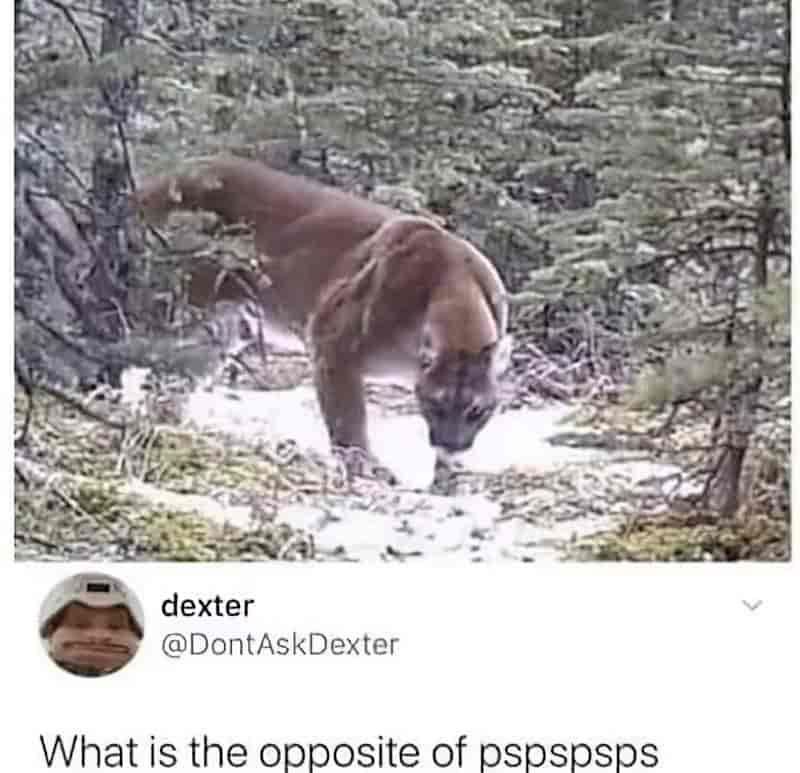
WHY THE CHASE WORKS SO WELL IN STORY
A story isn’t a story until the main character wants something, and chase is a certain kind of Desire — one character wants something from another. And that desire is externalised. It is also high in suspense. A chase scene will be fast-paced. It is therefore almost mandatory in certain genres, like thriller and action.
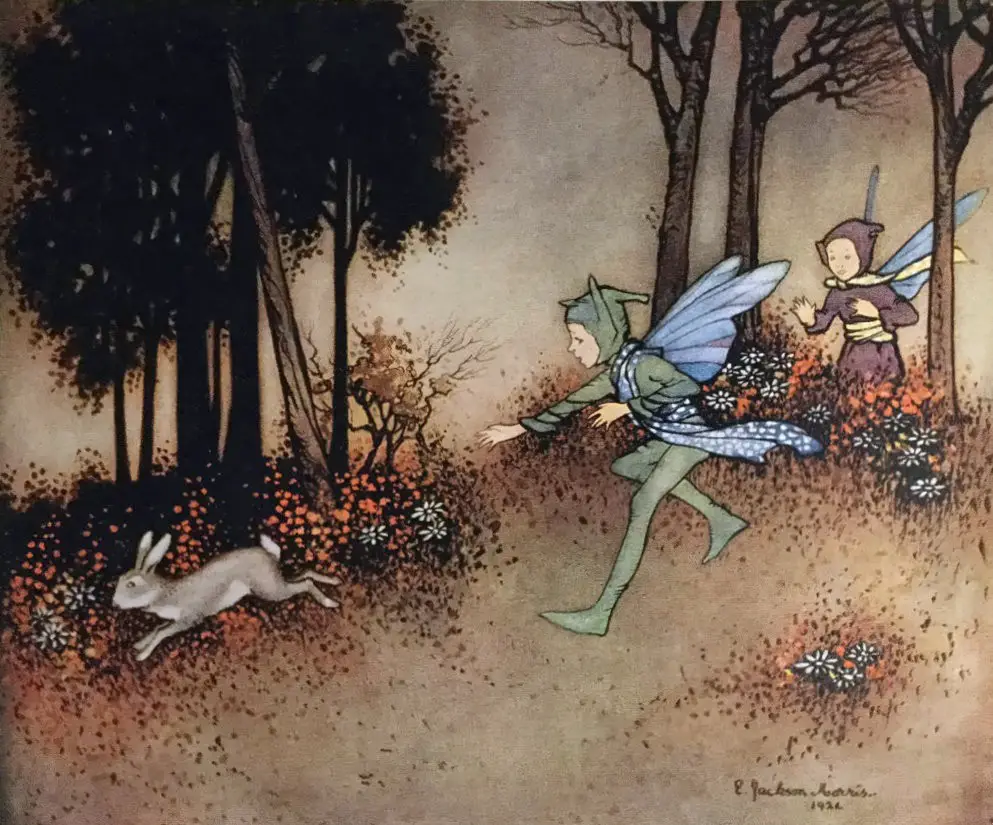
FURTHER STORYTELLING TERMS
THE DOUBLE-CHASE
In Secrets of Story, Matt Bird talks about the ‘double-chase’. This is when the main character is both hunter and hunted. This is often what sets off the ticking clock.
Bird also points out that when the double-chase begins, this often forces a decision. The example he offers is when David offers marriage in An Education.
The double-chase is often a feature of what TV Tropes calls the Stern Chase:
The protagonist is being pursued and must stay in motion, usually moving to a different Adventure Town each episode. There will be ploys to delay the pursuit. Some will work, some won’t. Frequently the protagonist must complete a hunt of their own, to bring the pursuit to an end.
The term “stern chase” comes from the navy cliche, “a stern chase is a long chase”, which comes from the old days of sailing ships.
TV Tropes
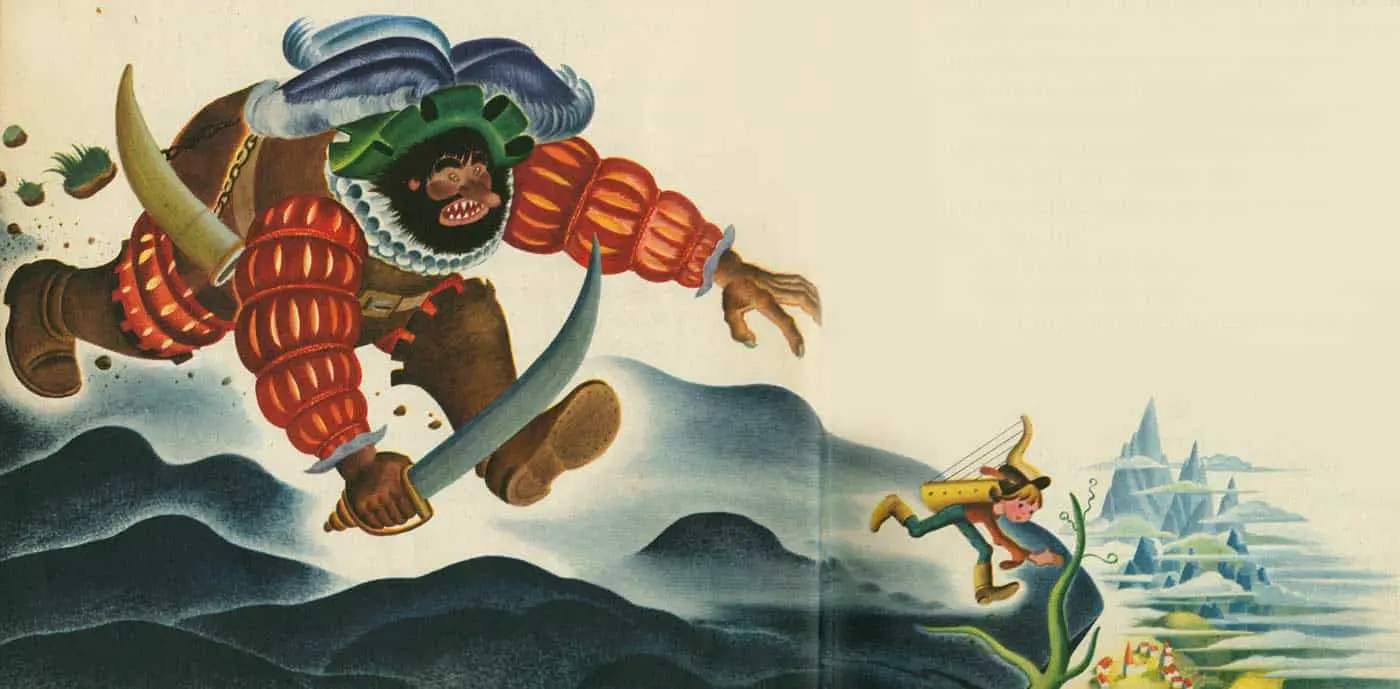
CHASE-AND-ESCAPE VS. CHASE-AND-CAPTURE
In Writing for Emotional Impact, Karl Iglesias advises juxtaposing scenes — positive charge followed by a negative charge and so on. Positive charge means things are going well for the character.
Chase-and-escape, chase-and-capture also describe scenes, specifically how they end. Iglesias is using the term ‘chase’ more broadly than a literal running-race type pursuit.
Because a scene usually involves a character wanting something from another (the chase), there are only two ways it can end: The character gets what they want, either outright or in a compromise (capture), or they don’t (escape).
Writing for Emotional Impact
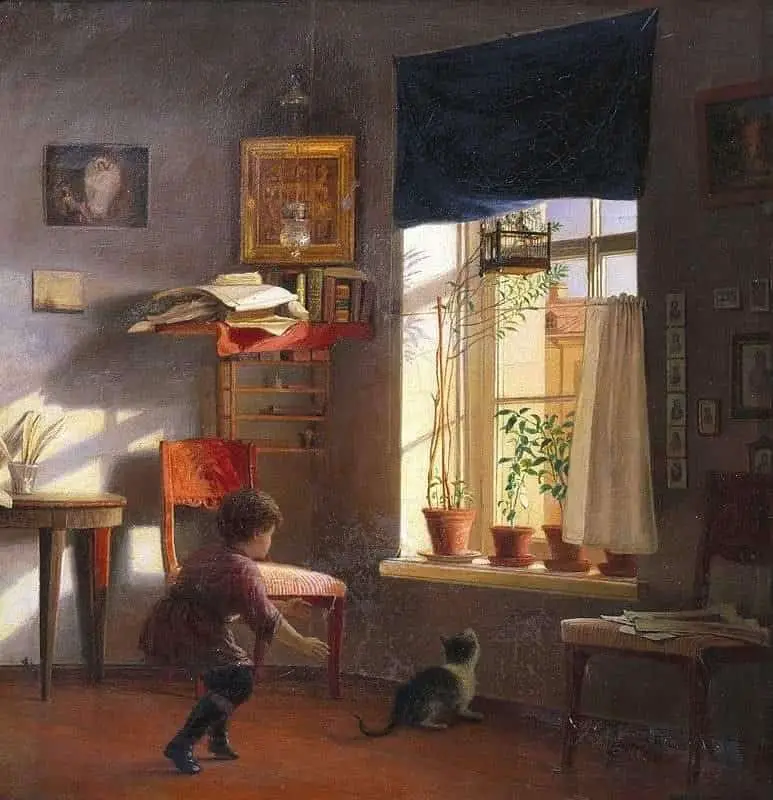
FURTHER READING
Why a former CIA spy stops at every yellow light from Insider Magazine explains how chases in the movies look quite different from chases in real world spy situations. (The essence is in the title.)
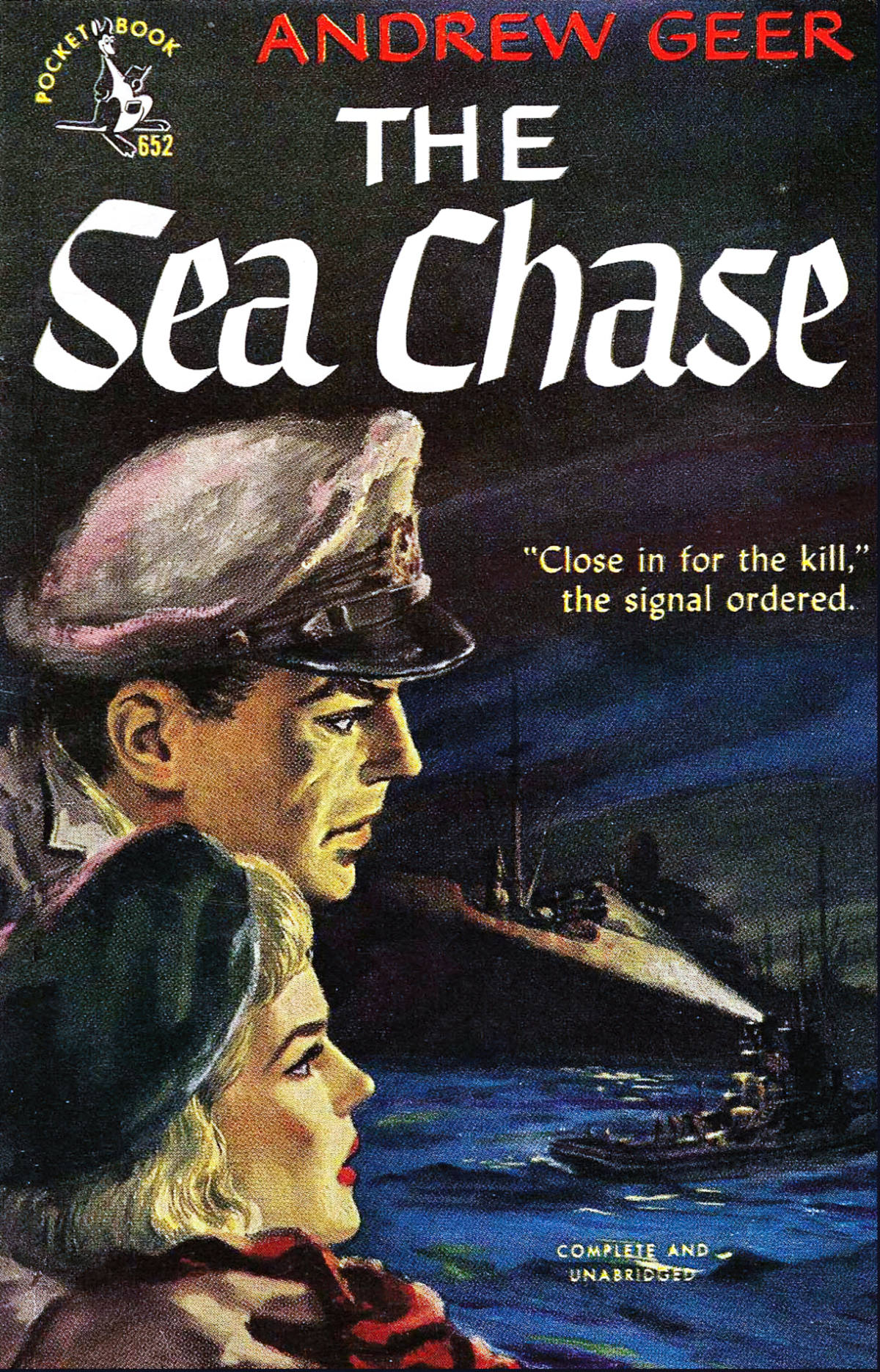
RELATED TERM
“Fruit Cart!”: An expletive used by film buffs during any chase scene involving a foreign or ethnic locale, reflecting their certainty that a fruit cart will be overturned during the chase, and an angry peddler will run into the middle of the street to shake his face at the departing Porsche.
Ebert’s Guide To Practical Filmgoing: A glossary of terms for the cinema of the 80s
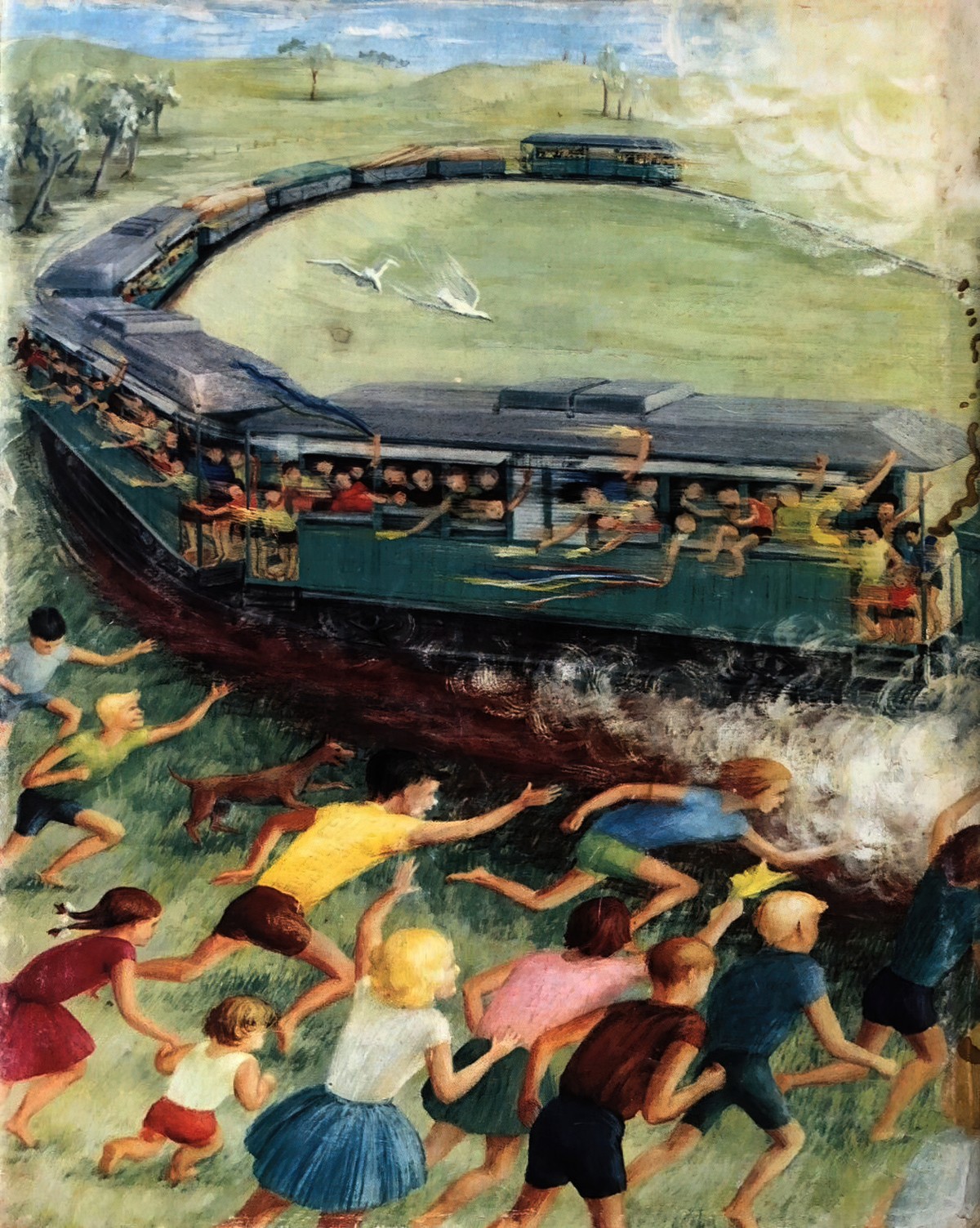
Header painting: Dewitt Clinton Boutelle — The Chase
